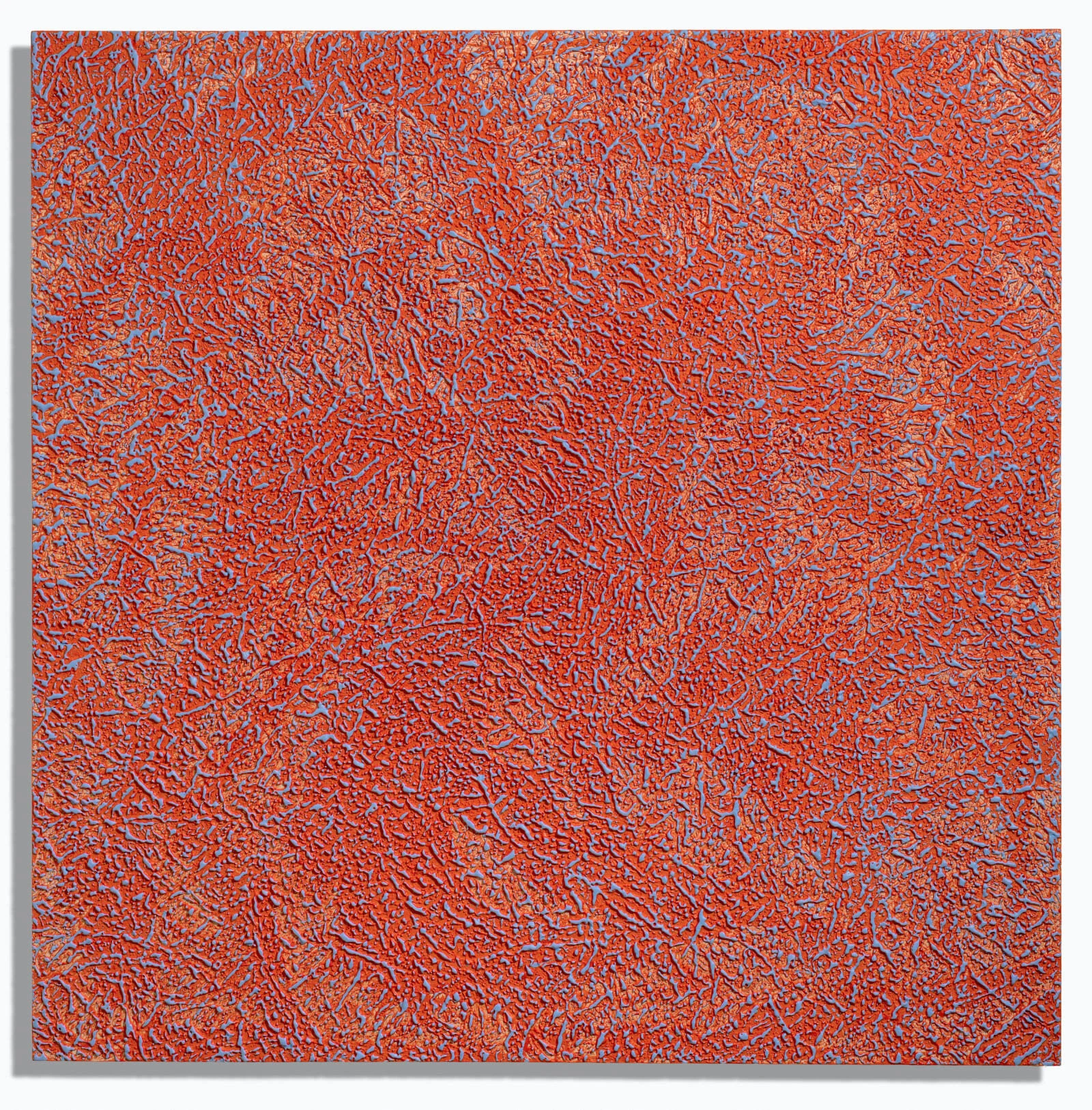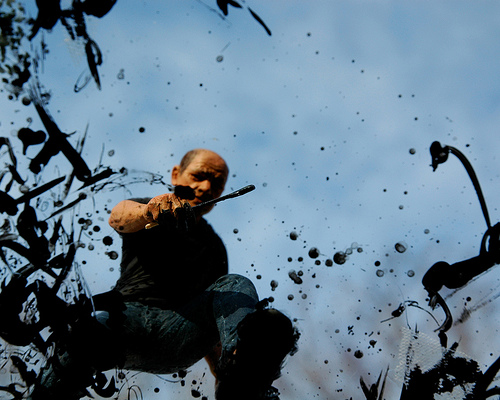
Better have that rash looked at
Encaustic painting from Martin Kline’s show “Allover,’’ at Heather Gaudio Fine Art, New Canaan, Conn., Jan. 23-March 6.
The gallery says:
“Throughout the course of his career, Kline has examined systems of historicism and presentation, his focused and disciplined approach creating bodies of works in series, each with their distinctive visual language. Among his many investigations, Kline has looked to notions of authenticity, sincerity and originality, and, as he states, there comes a point when an artist ‘cannot escape Jackson Pollock’ For this exhibition, Kline presents his newest group of paintings entitled “Allover,’ inspired by the drip technique he used in “Dream of Pollock’’ (for Kirk Varnedoe) back in 2007.
The multi-colored “Allover’’ series consists of, for the most part, strictly monochromatic abstractions. Created in a looser, automatist fashion, these paintings have a more fluid sensibility, with random thread-like rivulets of pigment networked in and out of broader, purposeful bands of color. Unlike previous series, these paintings lack compositional focal points, nor do they possess narrative characteristics seen in his Hammocks assemblages. The viewer’s eye is free to wander all over and engage with the painted surface indiscriminately.
”While Kline may be revisiting the spontaneous technique for which Pollock became famous, the approach to painting with the panel positioned horizontally has been very much decidedly his own from early on. Kline has mostly worked on his surfaces laid horizontally, typically on a tabletop—his signature additive approach to painting requiring the pull of gravity to fasten the pigments in situ while drying. For the most part, Kline’s hand has had a direct touch through the use of a paintbrush on the paper, panel or canvas. In the Allover paintings, Kline is still working horizontally but he has severed the traditional anatomical connection, distancing himself from the surface even more by placing the panels on the floor. This increased space relinquishes control for the drips and pours to act more randomly and allow for elements of surprise to occur. Most of the panels in this series lack confining frames and the sides are free of splashed pigments that reveal the process. The resulting suggestion is that the drips and thicker gestures of color travel beyond the picture plane. It is as if the viewer is getting a snapshot, a window into elements that exist outside the painting’s boundaries.’’
The big dripper
"Jack the Dripper,'' by JOE FIG (courtesy of the artist and the Tierney Gardarin Gallery, New York), at the Bruce Museum, in Greenwich, Conn., in the current "Artists' Studios: Small-Scale Views'' show.
The "Jack'' here is, of course, famed abstract expressionist Jackson Pollock, whose violent alcoholism would have been denounced by the quiet and dignified alcoholics living in the famous rich precincts of Greenwich.

